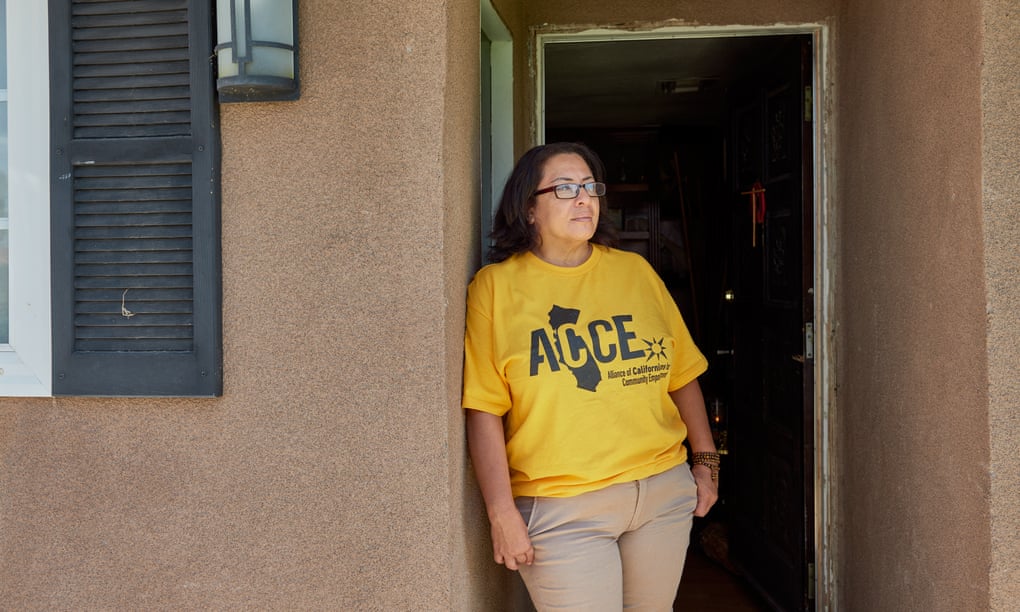California’s ambitious program to provide rent relief to every low-income tenant struggling during the pandemic has been plagued by delays and challenges, and some renters who are waiting for the aid to arrive say they are now facing eviction threats.
California officials have been working since March to distribute funds to landlords whose tenants fell behind on rent during the pandemic, and in June authorities promised that the state would pay off the entirety of the rent debt of qualifying tenants. But the program has been slow to roll out, with eligible tenants across the state having difficulties applying while others say they’ve had to wait months for funds.
Tenant groups fear that if problems persist, hundreds of thousands of renters could be vulnerable to displacement when California’s eviction protections expire at the end of September. As of last week, the majority of applicants haven’t received any rent relief yet, according to state data. The city of Los Angeles has run out of money and closed its program, saying it is unable to meet demands. Meanwhile, renters’ debts are increasing as the spread of the Delta variant prompts further economic hardships.
“I’m just doing what I can to survive,” said Jenise Dixon, an LA tenant who fell behind on rent after she lost work in the film industry last year. She applied for rent relief in April but has not yet received aid. While her application was pending, her landlord delivered an eviction notice, records show, despite local and federal protections in place against evictions.
“We didn’t ask for this pandemic, we didn’t ask to lose our jobs. We didn’t ask for all this turmoil,” she said. “Taking months to distribute these funds is just unacceptable.”
A promise of total rent forgiveness
California’s $5.2bn plan constitutes the largest rent forgiveness program in the country and received national attention in June when the governor, Gavin Newsom, said federal funds would cover every low-income renter.
“Getting 100% rental assistance approved was a really big victory,” said Andrés Ramos, legislative counsel at Public Advocates, a California civil rights organization.
In the largest state in the nation, which had a housing and homelessness crisis before the pandemic, the need was huge. More than 800,000 households are behind on rent, owing an average of $4,400 per household, according to a recent estimate.
But there have been big gaps in getting the assistance out. As of last week, 132,000 people have submitted initial applications for relief through the state, 91,000 households have completed applications, and 20,000 of them, just 22%, have received financial aid. The state has doled out a total of $242m, which is about 23% of the funds requested so far. Officials are now receiving more than 7,000 new applications a week.
The state data does not include cities and counties that chose to operate their own programs. The LA city program was only open for the month of April, shutting down after it was overwhelmed with requests from 110,000 people. Applicants claimed more than $500m, which was more than double the amount allotted to the city, a spokesperson said, adding that the city expected to receive more funds and reopen applications around 15 September.
San Francisco has roughly $137m available for aid and has doled out an estimated $19m so far, said Dean Preston, a member of the board of supervisors. Preston has argued that lawmakers should not have waited this late in the pandemic to give out the funds: “This is an example of government being pretty reactive instead of proactive.”
Fighting to access help: ‘A nightmare’
Some of the early problems with the program were predictable, advocates said. When it launched, the online HousingIsKey.com portal was difficult to use and required applicants to navigate through multiple pages in English before getting options for other languages.
“A lot of tenants gave up in frustration, and for good reason,” said Gen Fujioka, of the San Francisco Anti-Displacement Coalition. Unable to access aid and threatened by landlords, some tenants had moved out, he said: “They are falling so far in debt, they feel like they can’t afford to wait. What happens if the rent relief doesn’t come through?”
Tenants who were able to navigate the online system quickly ran into a myriad of other obstacles. Gabriel Guzman and his wife, who live in Chula Vista in southern California, fell behind on rent after they were forced to stay home and take care of their three young children, two of whom were doing remote learning.
The couple applied for rent relief in March through the Chula Vista city program and months later have received nothing. They were first told the application was incomplete, and then were rejected after submitting more records. The program said the couple had not sent in records that Guzman said he had already provided. Guzman said he had gone in person to request help and left repeated voicemails, but had received no follow-up. He is trying to appeal the rejection.
“It’s a nightmare,” said Guzman, 49, who was working for a restoration company until he was forced to stay home during Covid-19. “And we have the capacity to go online. We know our way around. It’s a wonder how people who have less access are able to make their way through this ordeal.”
A spokesperson for the Chula Vista program declined to comment on Guzman’s case but said that the city could reopen cases if applicants appealed and had the documents ready.
In the Central Valley, the state’s foremost agricultural region, there have been significant obstacles for undocumented residents, whose status is not supposed to preclude them from aid, advocates said.
“Folks are exhausted because they keep hearing that there is so much money out there and you can apply, but when they do, there are just so many barriers,” said Jovana Morales-Tilgren, housing policy coordinator with Leadership Counsel for Justice and Accountability, a Fresno-based organization.
The Central Valley Opportunity Center (CVOC), an organization contracted to provide the aid, has been asking applicants for their social security numbers in their initial screening, records show, complicating the application process for undocumented residents.
Cecilia Escobedo Villegas, 49, an undocumented Merced resident who was working in housekeeping before the pandemic, said she struggled with the online forms and then went in person to CVOC to complete an application for aid to cover her utility bills. She became distressed when she said she was initially told she couldn’t apply without a social security number.
“I felt so humiliated,” she said in an interview in Spanish. “They shouldn’t be asking vulnerable people for this information … and why is CVOC making this process so difficult?” She said she was ultimately able to submit an application.
Morales-Tilgren’s group has pressed Merced county and CVOC officials to remove the social security requirement. CVOC has responded that that if renters are undocumented, their landlords should apply on their behalf, emails show.
Officials with CVOC and Merced county told the Guardian that in the initial rollout, the program had mistakenly turned away a small handful of applicants without social security numbers, but authorities had worked to rectify those mistakes and now made clear to applicants that it was not required.
In the city of LA, Jenise Dixon applied for relief in April, and the program told her on 25 May that she had qualified and that her landlord had been notified. She asked her landlord to accept the funds in May, but her landlord, who has repeatedly threatened eviction, hadn’t submitted documents to the city as of last week, records show, which means Dixon is stuck waiting: “The landlord is ignoring this application and refusing to accept the money, and the city of LA has no answers for me.”
Dixon, who has lived in her unit for 18 years, tried driving for Uber and doing other gig jobs to keep up with her bills, but said her debts were insurmountable. A city spokesperson declined to comment on her case.
A lawyer representing Dixon’s landlord told the Guardian that the landlord was only notified last week that she needed to submit documents and was now in the process of completing the application. The lawyer said the landlord had not been aware that Dixon had requested relief when she filed an eviction notice in May, adding that the landlord had not moved forward with eviction proceedings.
Dixon, who is now advocating for tenants’ rights with the Alliance of Californians for Community Empowerment (ACCE), is not the only renter whose case was stalled because of landlord inaction. In Pasadena in southern California, Jaylynn Bailey applied for relief in March and was approved, but her landlord declined to accept the funds. Four months later, she’s still waiting. The state is eventually supposed to give the aid directly to tenants if landlords refuse to participate, but time is a luxury many renters don’t have.
State officials in a press briefing this week said they had made major improvements to the online process and noted that the state had significantly increased the pace of processing applications, though they did not share specific data on the average wait time for aid or how often landlords decline to participate. Officials also said California was moving faster than a majority of states doling out rent aid.
Eviction fears: ‘What am I going to do?’
Preston, the SF supervisor, said he understood that the relief program was a huge undertaking that would take time. But he argued the state needed stronger tenant protections in the meantime.
Throughout the pandemic, California has repeatedly extended its partial eviction moratorium just days before it was scheduled to expire, creating stresses for tenants and opportunities for landlords to try to push their renters out, he said: “As a state and as a society, I just think we need to take eviction off of the table in a clear and public way, especially in a situation where we are making this commitment to pay back all the rent.”
The Centers for Disease Control and Prevention (CDC) last week extended its partial ban on evictions for two more months, but California has stronger protections that supersede the federal rules.
Renters waiting for aid say their anxiety is increasing as they approach 30 September – the day that the state eviction restrictions are due once again to end.
“What am I going to do? I cannot allow my kids to be on the street,” said Isa Tabora, a 49-year-old resident of La Puente, a city in east LA county. She and her husband were unable to keep up with rent after they lost work and had to stay home to help their 14-year-old son, who was struggling with remote learning. Friends and family lent them funds to help cover rent in the beginning of the pandemic, but the debts have accumulated and she estimates she owes more than $12,000: “We try to keep up, but we can’t, because we’re so behind.”
Tabora, who had worked as a home healthcare aide, said she first tried applying for relief in May but had to resubmit her application in June. She is still waiting for the funds to be delivered. Her landlord has previously sent eviction notices. Reached by phone, her landlord said he had backed off the eviction threats once he learned the protections were extended, and that he hoped the aid would come through soon.
Still, the approaching deadline has left Tabora worried: “If I have to sleep in the car, I will. But I can’t let that happen to my kids.”






